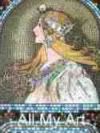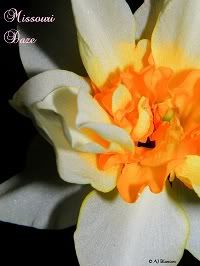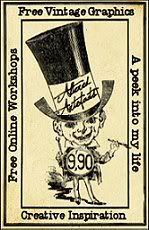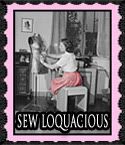This is a fun and fast idea to make a really unusual collage material. You will probably have everything you need for this project on hand – except possibly the embossing folder. Embossing folders are fairly inexpensive and even if you buy one just to try this tutorial, it will be money well spent. You might also look around your house and craft supplies to see if you have anything that could be substituted. Anything that can be pressed into wet paper to leave an impression will work.
SUPPLIES NEEDED:
Bathroom Tissue (toilet paper) and/or paper towels
Embossing folders, or polymer clay embossing plates
Spray bottle with Water
Optional Supplies:
Tissue paper
Paper napkins
Heat gun
Acrylic paint
Spray bottle of water mixed with ink
Mica Powder (Perfect Pearls or Pearlex)
Gel Medium or Mod Podge
Finishing spray or spray starch
I love using Cuttlebug embossing folders to make beautiful embossed paper for greeting cards and Artist Trading Cards. By following this tutorial, you will discover another use for these handy folders, creating beautiful, soft water-embossed paper for collages, Artist Trading Cards, or whatever artistic needs you may have.
I first tried this method using bathroom tissue, which works perfectly. Then, I found that paper towels also work very well.
DIRECTIONS
1. Decide what size you want your paper to be. It can be as large as the embossing plate, or smaller, if you are making an Artist Trading Card. Depending upon your embossing folder, you might also be able to make a larger piece of water-embossed paper by embossing the paper in stages, lining up the edges as you go.
1/2 sheet of Viva Paper Towels
2. Lay the edge of the paper on the bottom of the embossing plate and fold the paper back and forth until you have the desired thickness. I use about eight thicknesses of single-ply toilet tissue, or two or more thicknesses of paper towels. The number of pieces used depends upon the ply of your tissue, or the thickness of your paper towel. I used Viva towels and only needed two thicknesses. If desired, you can cut the tissue or paper towels into pieces the size you want and stack them together instead of folding them back and forth.
1/2 sheet paper towel, folded over makes 2 sheets
3. Spray water all over the surface that you are embossing. Get the paper nice and wet. If your paper is larger than the desired size of your water-embossed paper, then just thoroughly wet the area that you are actually using.
Eight sheets of bathroom tissue
4. Close the top of the embossing folder and press firmly all over the top. If you are using polymer clay embossing plates, place the paper on a cookie sheet, place the embossing plate on the top and press firmly. You may also want to go over the plate with a rolling pin.
4. Raise the top of the embossing folder, or lift the top of your embossing plate and there’s your embossed paper! At this point, you can gently lift the paper up and place it on a drying rack to dry. You can use a heat gun to speed the process, but hold it fairly high because the tissue will dry rather quickly and you don’t want to start a fire. I use a drying area that I have set up in my craft room and use a small fan to dry all of my work.
5. When the piece is dry, you can paint it, emboss it with embossing powder, run an inkpad lightly over the embossing to highlight certain areas, etc.
6. Instead of spraying with water, you might want to spray with an ink-water mixture. You can also add mica powders to the ink-water mixture for a sparkling finish.
Some examples of paper sprayed with ink-water-mica powder mixture
7. Cut the finished pieces carefully. Depending upon how many layers of paper you used, the paper may want to split. You can add a slight touch of gel medium, Mod Podge, or glue to keep the edges in place.
8. Experiment with placing items in between the last two pieces of paper before embossing. I tried using glitter, but was disappointed that the glitter was really not visible under the top layer. You can lightly coat the top of the paper with gel medium or Mod Podge and sprinkle glitter on it.
9. Other types of paper to experiment with making this paper are paper napkins, tissue paper, or wrapping paper.
10. If you have made
glorious brayered paper, you can cut some finished pieces to fit the embossing folder, re-spray with water and close the top to emboss. You can also paint the brown paper while it's dry and then when the paper dries, wet it and emboss it with this method.
There are so many variations of this method! I have only mentioned a few. If you think of more, please email me or put a comment in this section. Have fun!
























































































































